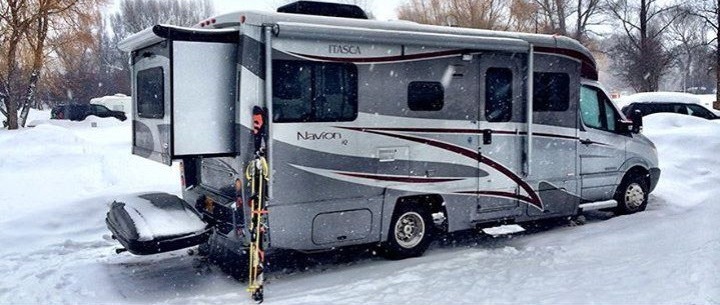
Comfort, seclusion, the ability to get away from the rest of
the world… These are all things you can associate with an RV—at least during
the summer months. During the winter months, words like “cold,” “freezing” and “air
leak” feel far more accurate. But there’s no reason you have to give up the
comforts of your RV just because it’s winter. Here’s a quick guide on how to
insulate an RV for winter use.
Finding The Air Leaks
Learning how to insulate an RV for winter use starts with
preventing any “air leaks.” No matter how effective your RV’s insulation might
be, it will all be for naught if warm air blows right out the door.
Start by looking for potential leaks in some common areas:
- Under the
door. This is perhaps the #1 candidate for losing air. You can purchase
draft stoppers online—just make sure you know the measurements before you click
“order.” - Driver
and passenger doors. Just because you’ve gotten the main door taken care of
doesn’t mean you’re not losing some air in the front doors. - Roof.
Inspect your roof before winter to make sure there aren’t any leaks you haven’t
detected yet. Just because rain hasn’t soaked in yet doesn’t necessarily mean
that air won’t.
Your best bet is to give your RV a thorough inspection
simply by having a look for noticeable leaks. You can also take the time to
heat up your RV, wait a little while, and then feel for “hot spots” from the
outside. But make sure you do this in a properly ventilated area.
Repairing Insulation
Problems With Sealant
What if you do
have problems like a leaky roof? Your best bet is simply to invest in a
water-tight sealant. A great sealant will keep out the rain and keep your warm
air in.
- Start by ensuring that you’re working with a
clean, dry roof. This helps ensure that your seal will be as tight and free of
debris as possible. - Then use one of our RV sealants, making sure that
you match the sealant to the material with which you’re working. Making sure
that you match the sealant to the material will give you the proper adhesion
you need for an airtight and watertight cure. That way, you aren’t repairing
the same leak again next year. Instead, you can count on insulation that lasts
for years on end. - Once you’re finished and the sealants have
cured, check your RV for leaky air again.
In some cases, you can make purchases to ensure that you
properly insulate your RV for winter. In other cases, you might have to repair
a leak yourself. The good news is that with the right RV products in hand, you can keep
your RV comfortable all winter long—and beyond!